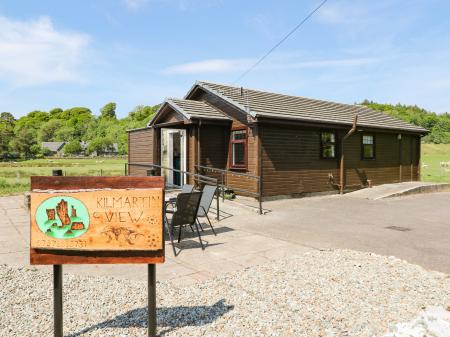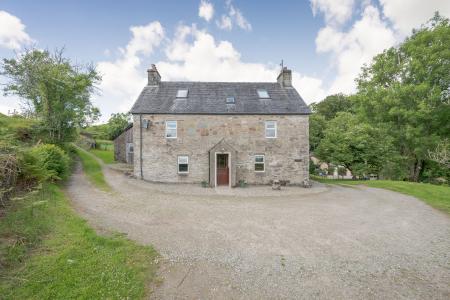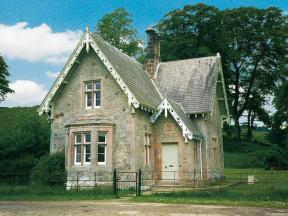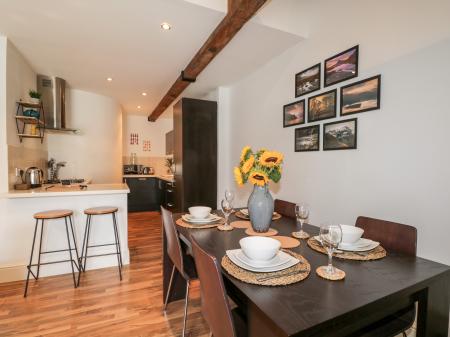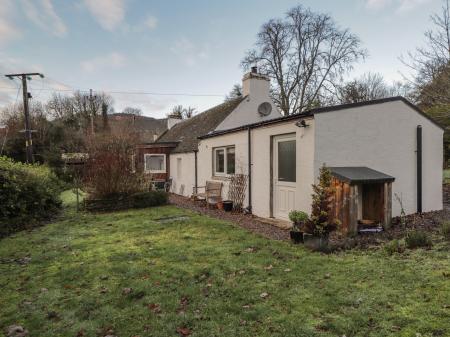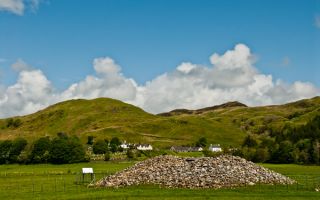
The Cairns
Three cairns make up the Nether Largie group. The first and most impressive tomb is Nether Largie South, which dates to the Neolithic era, while the Mid and North cairns are Bronze Age. Let's start with the oldest and arguably most impressive of the three cairns.
Nether Largie South
The oldest and most interesting of the cairns, dating to the Neolithic period, probably prior to 3000 BC. The cairn is piled high with small stones, and at the centre is a burial chamber, of a type commonly found in Argyll and Arran. When the cairn was first built, this chamber was covered by a trapezoidal mound. The mound was later covered by small stones to create the conical round cairn we see today. The chamber is divided into 4 compartments by upright slabs.
A pair of large vertical stones, rather like gateposts, guard the entrance. Burned fragments of bone were found, along with a round-bottom pot, made about 2400BC. There were also 3 beaker vessels, made a few centuries later. The presumption is that burial customs changed, and the beakers were used around the time that communal burials gave way to individual burials. At roughly the same time the other cairns in the Nether Largie group were built.
About 2000 BC the original cairn was expanded to a diameter of about 40 metres. Two cists from this period were discovered, and one is still very obvious just south of the main cairn. Just 250 metres away, in a belt of trees, lies Temple Wood stone circle. The circle was erected before 3000 BC, so it is possible that the southern cairn was in use at the same time.
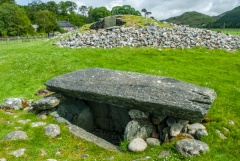
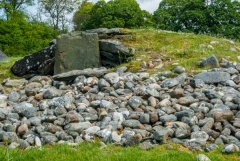
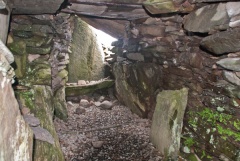
Nether Largie Mid
The smallest of the cairns, located a short walk north towards Kilmartin village from the south cairn, and easily visible in a farm field. This cairn is part of the second phase of building, dating to the early Bronze Age, around 2000 BC. The cairn is about 33 metres diameter, and 1 metre high. It was apparently over 3 metres high at one stage, which must have been incredibly impressive. There is a cist at one end, with a large capstone slab supported on modern metal posts so you can see inside the cist.
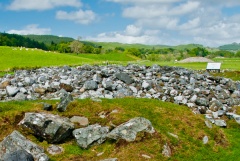
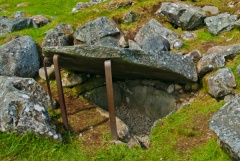
Nether Largie North
A very short walk north from the Mid cairn is this, perhaps the most interesting cairn for visitors as you can descend inside it to view a central chamber. Inside the chamber is a rectangular cist in the floor, and on one side is a very large slab that was once the capstone for the cist. This is carved with numerous cup and ring marks, and symbols of axe heads. Though I didn't count the carvings there are supposedly 40 cup marks and 10 axe heads. The marks are extremely easy to make out, though worn. The cairn is 20 metres diameter (about 65 feet), and almost 3 metres high.
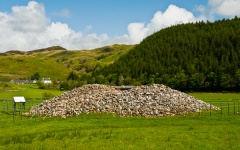
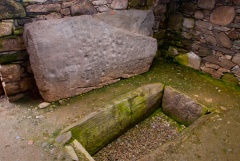
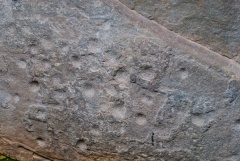
Visiting
There is a parking area on the B8029, signed of the A819 1 km south of Kilmartin village, from which a trail leads across the fields to Nether Largie - about 5 minutes to the south cairn. Alternatively, all the cairns in the linear cemetery, and Temple Wood stone circle, can be reached from the lane that runs along the west side of the glen, parallel to the A819.
All the sites are accessible at any time, though obviously good daylight will help see clearly inside the chamber in the northernmost cairn. If you plan on visiting all 3 cairns, plus the stone circle (which together make a very nice grouping of sites), allow at least 30 minutes, and realistically twice that.
 We've 'tagged' this attraction information to help you find related historic attractions and learn more about major time periods mentioned.
We've 'tagged' this attraction information to help you find related historic attractions and learn more about major time periods mentioned.